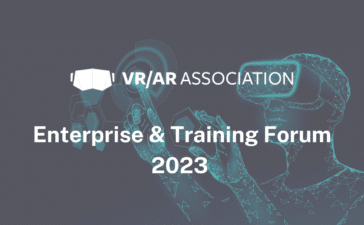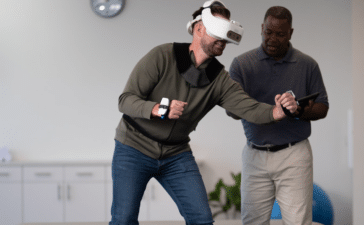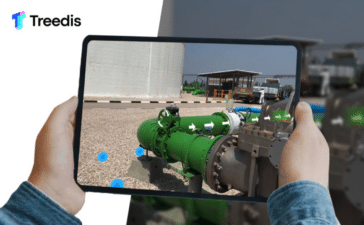Challenges Behind Applying Real-World Laws to XR Spaces and Ensuring User Safety
Immersive technologies bridging the gap between the physical and digital worlds can create new business opportunities. However, it also gives rise to new challenges in regulation and applying real-world laws to XR spaces. According to a World Economic Forum report, we are relatively slow in innovating new legal frameworks for emerging technologies like AR and VR.
Common Challenges of Applying Laws to AR and VR
XR technologies like AR and VR are already considered beneficial and are used in industries like medicine and education. However, XR still harbors risks to human rights, according to an Electronic Frontier Foundation (EFF) article.
Issues like data harvesting and online harassment pose real threats to users, and self-regulation when it comes to data protection and ethical guidelines is insufficient in mitigating such risks. Some common challenges that crop up when applying real-world laws to AR and VR include intellectual property, virtual privacy and security, and product liability.
There’s also the need for a new framework tailored to fit emerging technologies, but legislative attempts at regulation may face several hurdles. It’s also worth noting that while regulation can help keep users safe, it may also potentially hamper the development of such technologies, according to Digikonn co-founder Chirag Prajapati.
Can Real-World Laws Be Applied to XR Spaces?
In an interview with IEEE Spectrum in 2018, Robyn Chatwood, an intellectual property and information technology partner at Dentons Australia, gave an example of an incident that occurred in a VR space where a user experienced sexual assault. Unfortunately, Chatwood remarked that there are no laws saying that sexual assault in VR is the same as in the real world. When asked when she thinks these issues will be addressed, Chatwood remarked that, in several years, another incident could draw more widespread attention to the problems in XR spaces. It’s also possible that, through increased adoption, society will begin to recognize the need to develop regulations for XR spaces.
On a more positive note, the trend toward regulations for XR spaces has been changing recently. For instance, Meta has rolled out a minimum distance between avatars in Horizon Worlds, its VR social media platform. This boundary prevents other avatars from getting into your avatar’s personal space. This system works by halting a user’s forward movement as they get closer to the said boundary.
There are also new laws being drafted to protect users in online spaces. In particular, the UK’s Online Safety Bill, which had its second reading in the House of Commons in April 2022, aims to protect users by ensuring that online platforms have safety measures in place against harmful and illegal content and covers four new criminal offenses.
In the paper, The Law and Ethics of Virtual Assault, author John Danaher proposes a broader definition of virtual sexual assault, which allows for what he calls the different “sub-types of virtual sexual assault.” Danaher also provides suggestions on when virtual acts should be criminalized and how virtual sexual assault can be criminalized. The paper also touches on topics like consent and criminal responsibility for such crimes.
There’s even a short film that brings to light pressing metaverse concerns. Privacy Lost aims to educate policymakers about the potential dangers, such as manipulation, that come with emerging technologies.
While many legal issues in the virtual world are resolved through criminal courts and tort systems, according to Gamma Law’s David B. Hoppe, these approaches lack the necessary nuance and context to resolve such legal disputes. Hoppe remarks that real-world laws may not have the specificity that will allow them to tackle new privacy issues in XR spaces and shares that there is a need for a more nuanced legal strategy and tailored legal documents to help protect users in XR spaces.
Issues with Existing Cyber Laws
The novelty of AR and VR technologies makes it challenging to implement legislation. However, for users to maximize the benefits of such technologies, their needs should be considered by developers, policymakers, and organizations that implement them. While cyber laws are in place, persistent issues still need to be tackled, such as challenges in executing sanctions for offenders and the lack of adequate responses.
The United Nations Office on Drugs and Crime (UNODC) also cites several obstacles to cybercrime investigations, such as user anonymity from technologies, attribution, which determines who or what is responsible for the crime, and traceback, which can be time-consuming. The UNODC also notes that the lack of coordinated national cybercrime laws and international standards for evidence can hamper cybercrime investigations.
Creating Safer XR Spaces for Users
Based on guidelines provided by the World Economic Forum, there are several key considerations that legislators should consider. These include how laws and regulations apply to XR conduct governed by private platforms and how rules can potentially apply when an XR user’s activities have direct, real-world effects.
The XR Association (XRA) has also provided guidelines to help create safe and inclusive immersive spaces. Its conduct policy tips to address abuse include creating tailored policies that align with a business’ product and community and including notifications of possible violations. Moreover, the XRA has been proactive in rolling out measures for the responsible development and adoption of XR. For instance, it has held discussions on user privacy and safety in mixed reality spaces, zeroing in on how developers, policymakers, and organizations can better promote privacy, safety, and inclusion, as well as tackle issues that are unique to XR spaces. It also works with XRA member companies to create guidelines for age-appropriate use of XR technology, helping develop safer virtual spaces for younger users.
Other Key Players in XR Safety
Aside from the XRA, other organizations are also taking steps to create safer XR spaces. X Reality Safety Intelligence (XRSI), formerly known as X Reality Safety Initiative, is one of the world’s leading organizations focused on providing intelligence and advisory services to promote the safety and well-being of ecosystems for emerging technologies.
It has created a number of programs that help tackle critical issues and risks in the metaverse focusing on aspects like diversity and inclusion, trustworthy journalism, and child safety. For instance, the organization has shown support for the Kids PRIVACY Act, a legislation that aims to implement more robust measures to protect younger users online.
XRSI has also published research and shared guidelines to create standards for XR spaces. It has partnered with Standards Australia to create the first-ever Metaverse Standards whitepaper, which serves as a guide for standards in the metaverse to protect users against risks unique to the metaverse. These are categorized as Human Risks, Regulatory Risks, Financial Risks, and Legal Risks, among other metaverse-unique risks.
The whitepaper is a collaborative effort that brings together cybersecurity experts, VR and AR pioneers, strategists, and AI and metaverse specialists. One of its authors, Dr. Catriona Wallace, is the founder of the social enterprise The Responsible Metaverse Alliance. Cybersecurity professional Kavya Pearlman, the founder and CEO of XRSI, is also one of its authors. Pearlman works with various organizations and governments, advising on policymaking and cybersecurity to help keep users safe in emerging technology ecosystems.
One such issue that’s being highlighted by the XRSI is the risks that come with XR data collection in three areas: medical XR and healthcare, learning and education, and employment and work. The report highlights how emerging technologies create new privacy and safety concerns, risks such as the lack of inclusivity, the lack of equality in education, and the lack of experience in using data collected in XR spaces are cropping up.
In light of these issues, the XRSI has created goals and guidelines to help address these risks. Some of the goals include establishing a standards-based workflow to manage XR-collected data and adopting a new approach to classifying such data.
The EU is also taking steps to ensure data protection in emerging technologies, with new EU laws aiming to complement the GDPR’s requirements for XR technologies and services. Moreover, the EU data protection law applies to most XR technologies, particularly for commercial applications. It’s possible that a user’s explicit consent may be required to make data processing operations legitimate.
According to the Information Technology & Innovation Foundation (ITIF), policymakers need to mitigate so-called regulatory uncertainty by making it clear how and when laws apply to AR and VR technologies. The same ITIF report stresses that they need to collaborate with stakeholder communities and industry leaders to create and implement comprehensive guidelines and clear standards for AR and VR use.
However, while creating safer XR spaces is of utmost importance, the ITIF also highlights the risks of over-regulation, which can stifle the development of new technologies. To mitigate this risk, policymakers can instead focus on developing regulations that help promote innovation in the field, such as creating best practices for law enforcement agencies to tackle cybercrime and focusing on funding for user safety research.
Moreover, the ITIF also provides some guidelines regarding privacy concerns from AR in public spaces, as well as what steps leaders and policymakers could take to mitigate the risks and challenges that come with the use of immersive technologies.
The EFF also shares that governments need to execute or update data protection legislation to protect users and their data.
There is still a long way to go when applying real-world laws to XR spaces. However, many organizations, policymakers, and stakeholders are already taking steps to help make such spaces safer for users.
Challenges Behind Applying Real-World Laws to XR Spaces and Ensuring User Safety Read More »


















 Treble uses a “wave-based approach” that accounts for the source of the audio, as well as the geometry of the space and the physical properties of the building material. In the event that the virtual space includes fantastical or unspecified materials, the company assigns a set of physical characteristics from a known real-world material.
Treble uses a “wave-based approach” that accounts for the source of the audio, as well as the geometry of the space and the physical properties of the building material. In the event that the virtual space includes fantastical or unspecified materials, the company assigns a set of physical characteristics from a known real-world material.
 “AI is kind of the talk of the town these days and one of the major issues of training AI is a lack of data,” said Pind. Training AI to work with sound requires a lot of audio which, historically, had to be sourced from physical equipment transported and set up in physical environments. “Now they’re starting to come to us to synthetically generate it.”
“AI is kind of the talk of the town these days and one of the major issues of training AI is a lack of data,” said Pind. Training AI to work with sound requires a lot of audio which, historically, had to be sourced from physical equipment transported and set up in physical environments. “Now they’re starting to come to us to synthetically generate it.”



